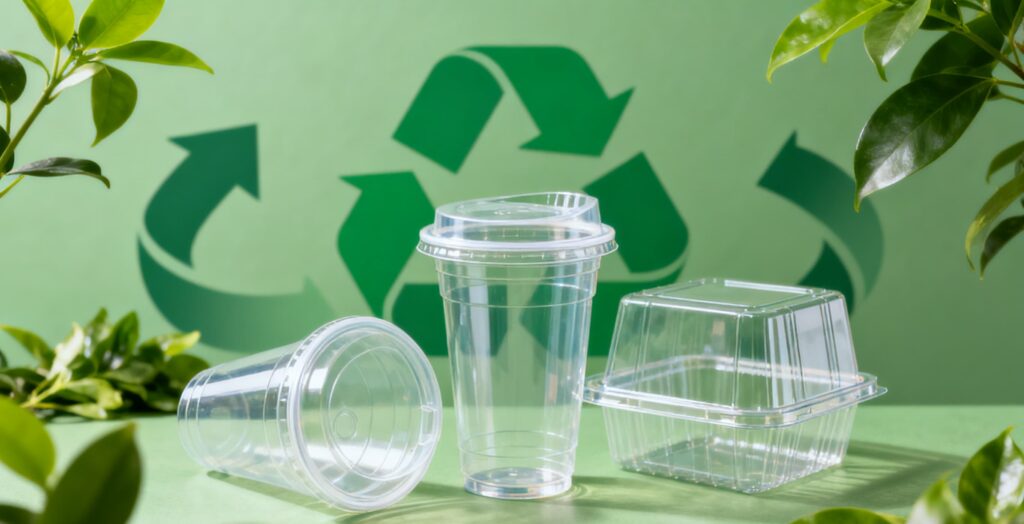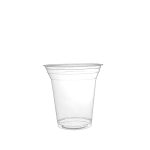Quick Summary:
This article explores the growing use of RPET (Recycled PET) and PET in food packaging, highlighting the benefits, challenges, and policies surrounding these materials. As sustainability becomes a key focus for industries worldwide, RPET offers an environmentally friendly alternative to virgin PET, reducing plastic waste and lowering carbon emissions. The article covers global policies promoting RPET use, the environmental advantages of both PET and RPET, their applications in the food industry, and the challenges in adopting these materials. With increasing consumer demand for sustainable packaging, the future of RPET in food packaging looks promising, with innovations and regulations driving growth.
Introduction
The demand for sustainable packaging solutions has surged in recent years, with PET (Polyethylene Terephthalate) and RPET (Recycled PET) playing a critical role in the shift towards environmentally-friendly food packaging. Governments, businesses, and consumers alike are increasingly prioritizing sustainability, pushing industries to adopt packaging solutions that minimize environmental impact while maintaining product safety and quality. This article explores the policies surrounding RPET and PET food packaging, their benefits, challenges, and their role in shaping the future of food packaging.

What Is PET and RPET?
PET is one of the most widely used plastics globally, especially in the food and beverage industry. RPET refers to recycled PET, which has been repurposed from post-consumer plastic bottles and containers. By using RPET, the packaging industry is able to reduce the environmental footprint associated with virgin plastic production.
PET and RPET are preferred materials for food packaging due to their transparency, strength, and durability. RPET offers the added benefit of being environmentally friendly, as it helps reduce plastic waste and supports the circular economy.
Key Benefits of PET and RPET Packaging:
-
PET is lightweight, durable, and provides excellent protection to food products.
-
RPET helps reduce the need for virgin plastic and lowers carbon emissions associated with plastic production.
-
Both materials offer recyclability, aligning with global sustainability efforts.
Global Policies on PET and RPET Packaging
Governments worldwide are increasingly implementing policies to reduce plastic waste and promote the use of recycled and sustainable packaging materials. Here’s a look at some of the key policies influencing the use of PET and RPET in food packaging:
European Union Policies
The European Union has been a leader in promoting sustainability and reducing plastic waste. In 2018, the EU introduced its Single-Use Plastics Directive, which aims to reduce plastic pollution by banning certain single-use plastics, promoting alternatives, and encouraging recycling. This legislation includes specific targets for RPET use in packaging.
The EU also introduced the Circular Economy Action Plan, which sets a target for recycling 90% of plastic bottles by 2029. To meet these goals, the EU is encouraging the use of RPET in beverage containers and food packaging.
United States Policies
In the United States, various states have passed their own laws targeting plastic waste reduction. California, for instance, has introduced the California Recycling Modernization Act, which mandates that a higher percentage of recycled content, including RPET, be used in beverage containers. The California Redemption Value (CRV) program incentivizes the return of plastic bottles for recycling, driving the demand for RPET.
Other Global Initiatives
Countries such as Japan, Canada, and Australia have introduced their own regulations and incentives to promote RPET packaging. Japan’s Plastics Resource Recycling Strategy aims to reduce plastic waste and increase recycling, with a focus on the reuse of RPET.

Environmental Impact of PET and RPET
PET is a lightweight, strong, and durable plastic that has been the go-to material for food packaging for decades. However, the environmental concerns associated with virgin PET production, including high energy consumption and reliance on fossil fuels, have led to the increased use of RPET.
Carbon Footprint Reduction with RPET:
-
Using RPET can reduce carbon emissions by up to 60% compared to using virgin PET.
-
Recycling PET into RPET requires less energy, helping to conserve natural resources and reduce environmental pollution.
Benefits of RPET in Food Packaging:
-
RPET contributes to a circular economy by reducing waste and extending the lifecycle of materials.
-
It helps minimize the extraction of petroleum-based raw materials for PET production, reducing the dependence on fossil fuels.
-
RPET containers can be recycled multiple times, further supporting sustainability efforts.
RPET and PET Packaging in the Food Industry
The food industry is a major consumer of PET and RPET for packaging products such as beverages, ready-to-eat meals, snacks, and fresh produce. RPET is increasingly being used for these applications due to its environmental benefits, compliance with recycling regulations, and consumer demand for sustainable products.
Applications of RPET in Food Packaging:
-
Beverage Bottles: A significant portion of beverage bottles is made from RPET, thanks to its strength, clarity, and ease of use.
-
Food Trays and Containers: RPET is widely used for fresh produce trays, ready-to-eat meal containers, and deli containers.
-
Snack Packaging: RPET is becoming a popular choice for snack food packaging due to its durability and ability to maintain product freshness.
Consumer Demand for Sustainable Packaging
Consumers are increasingly choosing products packaged in RPET due to growing environmental concerns. This demand has led to more companies adopting RPET for food packaging, in compliance with environmental regulations and to meet consumer expectations.

Challenges of RPET Adoption in the Food Packaging Industry
Despite the many benefits of RPET, there are several challenges to its widespread adoption in food packaging.
Supply Chain Issues
The supply chain for RPET can be complicated due to the need for specialized facilities to collect, sort, and process PET bottles. Additionally, maintaining a high level of RPET quality requires a continuous supply of clean, post-consumer plastic.
Cost Considerations
While RPET offers environmental benefits, it is often more expensive than using virgin PET, particularly in regions with low recycling rates. However, the long-term environmental and economic benefits of RPET are expected to outweigh these initial costs as recycling infrastructure improves.
Consumer Perception
While RPET is gaining traction, some consumers may still perceive RPET products as lower quality or less safe than products packaged in virgin PET. Education and awareness campaigns will be critical in shifting these perceptions.
Future of RPET and PET Food Packaging
The future of RPET and PET packaging looks promising, with increasing investments in recycling technologies, government incentives, and consumer demand for sustainable packaging.
Increased Use of RPET in Food Packaging
As RPET becomes more readily available and affordable, its use in food packaging will continue to grow. Many companies are committed to using 100% recycled content in their packaging, which will reduce waste and lower the carbon footprint of food products.
Innovations in PET and RPET Packaging
Innovation in PET and RPET packaging includes improvements in the strength, clarity, and functionality of materials. Additionally, new recycling technologies and innovations in biodegradable additives will further improve the sustainability of PET and RPET packaging.
FAQ
1. What is the difference between RPET and PET?
PET (Polyethylene Terephthalate) is a widely used plastic made from virgin resources, while RPET is recycled PET that has been collected, cleaned, and repurposed into new products.
2. Can RPET be recycled again?
Yes, RPET can be recycled multiple times, contributing to a circular economy where materials are reused rather than discarded.
3. Is RPET safe for food contact?
Yes, RPET is considered safe for food contact when it meets regulatory standards such as FDA and EU food contact materials regulations.
4. How does RPET benefit the environment?
By reducing the need for virgin PET production, RPET helps conserve natural resources, lower carbon emissions, and reduce plastic waste in landfills and oceans.
5. Why is RPET more expensive than PET?
The production of RPET can be more expensive due to the costs of collecting, sorting, and processing recycled materials. However, as recycling technologies improve, the cost of RPET will likely decrease.
Conclusion
The use of RPET and PET in food packaging is critical to addressing global sustainability challenges. RPET offers significant environmental benefits by reducing waste, lowering carbon emissions, and promoting a circular economy. While challenges remain, ongoing policy initiatives, technological innovations, and growing consumer demand for eco-friendly products will drive the adoption of RPET in food packaging.
By choosing RPET, businesses not only comply with global sustainability regulations but also cater to the growing market of environmentally conscious consumers. The future of PET and RPET food packaging is bright, and it is clear that these materials will play a key role in shaping a sustainable and environmentally-friendly future for the packaging industry.
References
-
European Commission – EU Plastic Strategy
https://ec.europa.eu/environment/circular-economy/index_en.htm -
US EPA – Sustainable Materials Management
https://www.epa.gov/smm -
European Bioplastics – RPET Facts
https://www.european-bioplastics.org/ -
Xiamen Dashan – PET and RPET Food Packaging Solutions
https://www.dashanpacking.com




